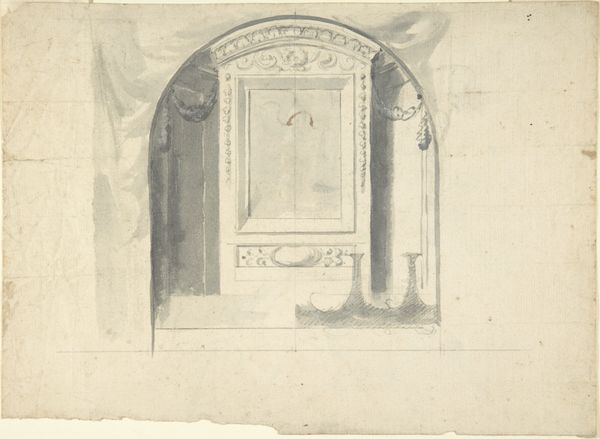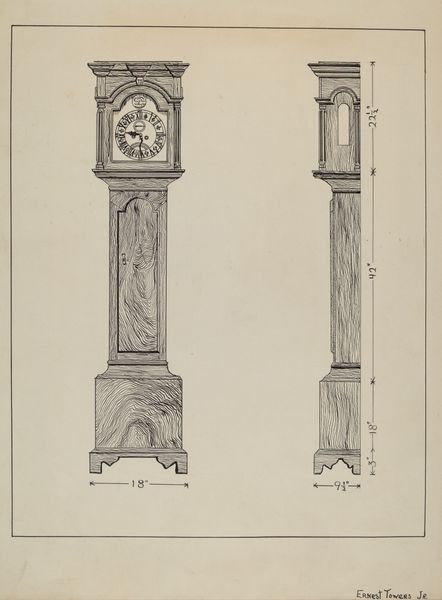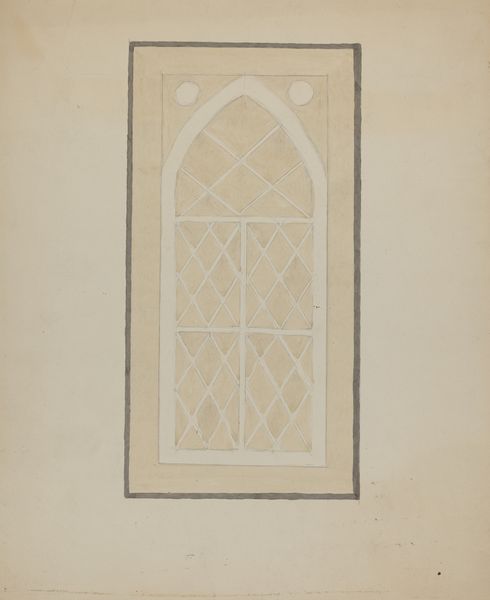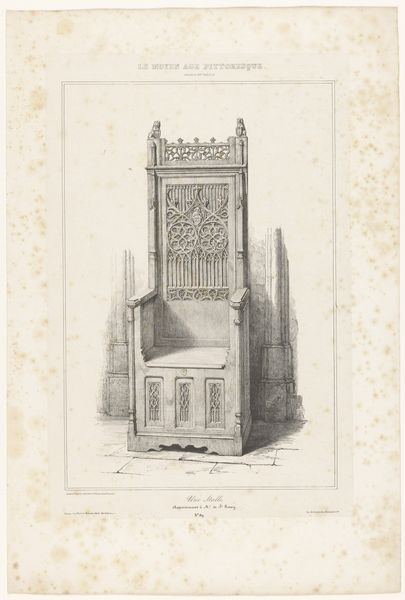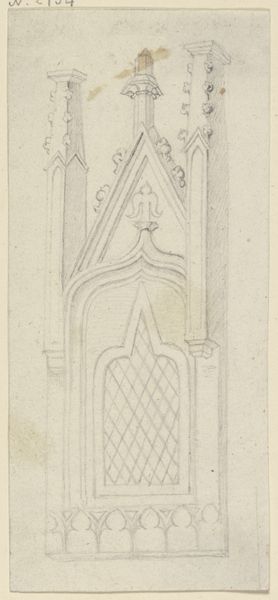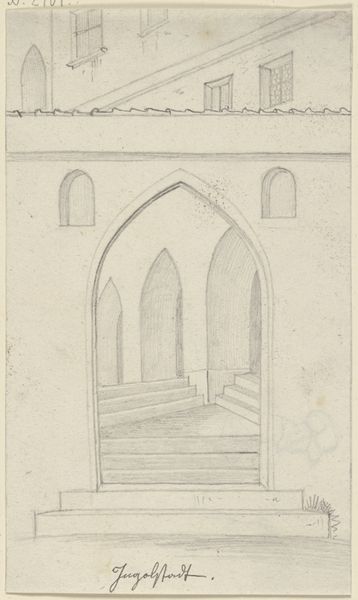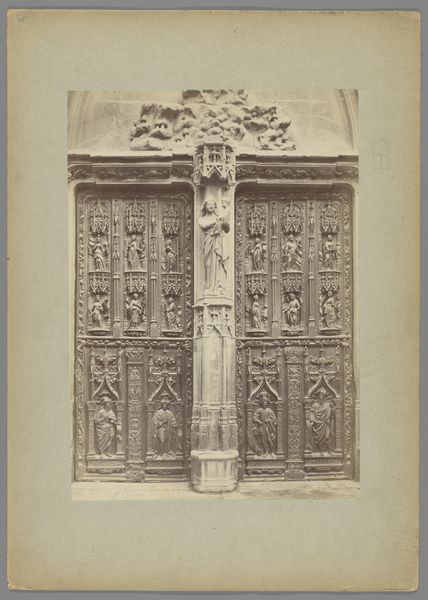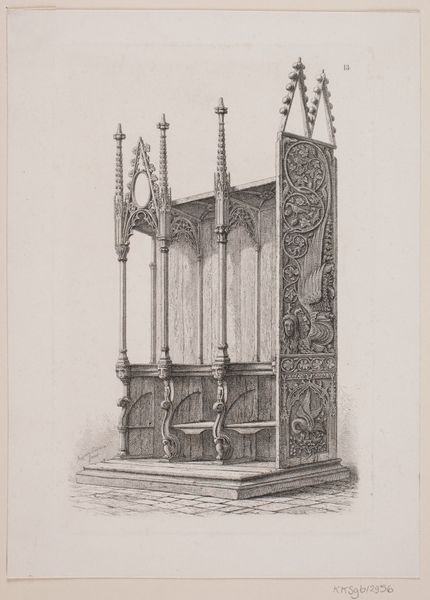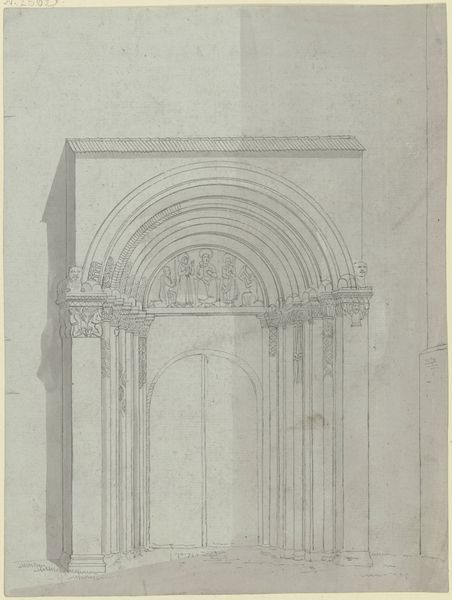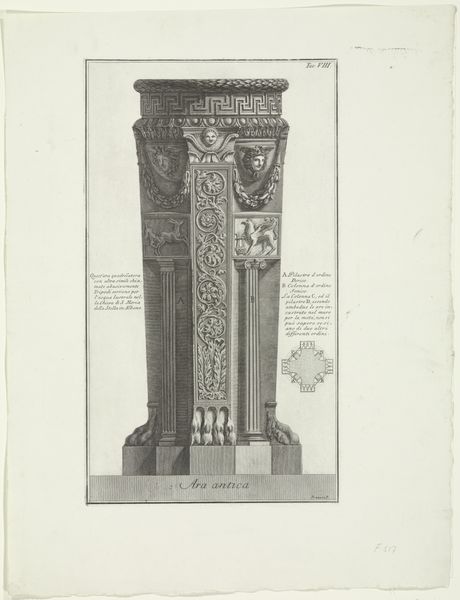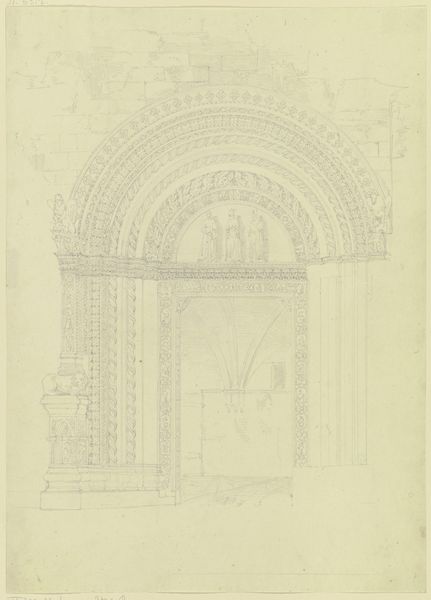
drawing, paper, pencil
#
drawing
#
paper
#
geometric
#
pencil
#
line
#
academic-art
Copyright: National Gallery of Art: CC0 1.0
Editor: So this is "Sconce," a pencil drawing on paper by Mildred Ford, dating from 1935 to 1942. It’s quite detailed, almost technical in its precision. What do you make of it? Curator: Well, consider the period. The 1930s and early 40s were marked by economic hardship and, later, global conflict. Precision and practicality were virtues. How do you think that informs an artwork like this depicting a sconce? Editor: I hadn’t thought of it that way. It seems almost… humble. Not meant to be grand or ornate, but functional. A diagram. Curator: Precisely. This isn't merely an aesthetic object; it is a depiction of something for the home and it has clear connections with industry and function. Note also the very deliberate geometric rendering and how that removes overt expressions of emotion. Don't you think there is a link between this, a functional sconce, and the drive toward pragmatic solutions in society? Editor: Definitely! It makes me think about how artists were reflecting—or even responding to—the social climate through seemingly simple subjects. And even a common item like a sconce reflects societal values! Curator: It certainly does. Artists often became integral players in constructing this dialogue. Consider the academic style employed here, a reflection of formal training prevalent at the time, where exactitude in representation carried weight, particularly given social anxieties during that historical period. It might encourage us to see a deeper narrative and link between daily life and the world around us. Editor: That gives me a completely different way of seeing it. Thanks. Curator: It works that way, and that's what I learned today too. The conversation between everyday things and their deeper roots matters more.
Comments
No comments
Be the first to comment and join the conversation on the ultimate creative platform.
